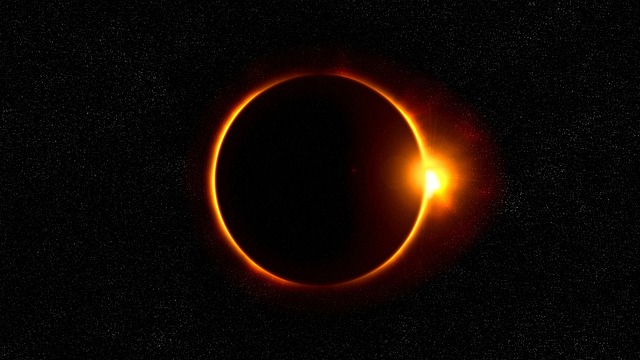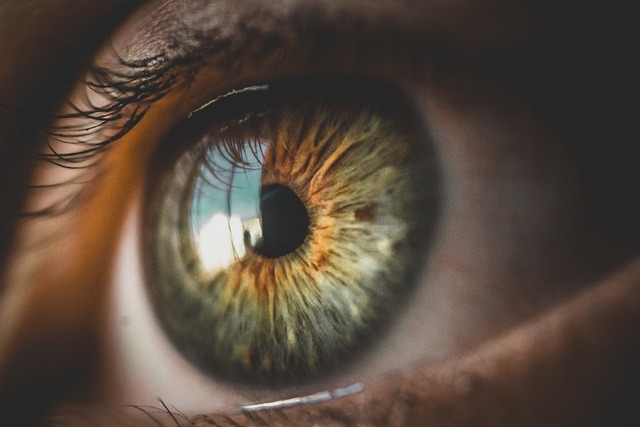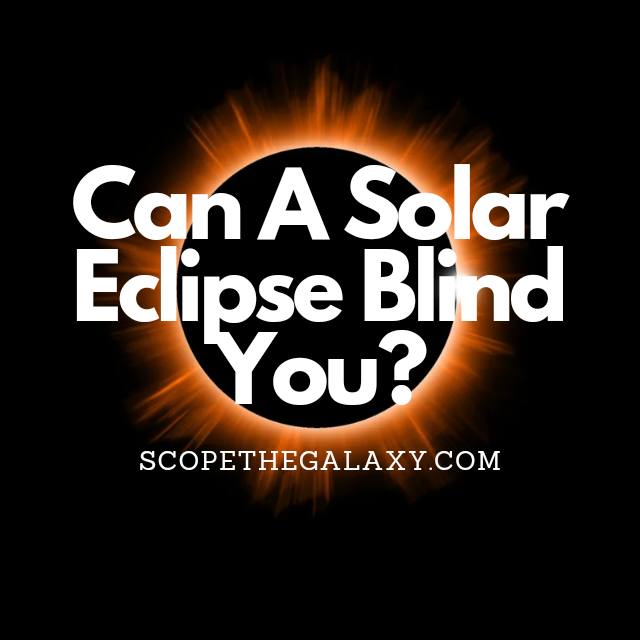*This post may contain affiliate links. This means we may make a commission if you purchase an item using one of our links*
Looking at a total solar eclipse is safe for several minutes as it emits less radiation than when we view a full moon. Still, solar eclipses pose a significant risk to our eyes and vision because their totality phase is only short, and the partial phases of this phenomenon can cause considerable damage to our sensory organs.
Continue reading to discover how long you can safely look at a solar eclipse and the safety measures you should take to protect your eyes during this time.
How Long Can You Look At A Solar Eclipse?
Table of Contents

You can look at a total solar eclipse without risking any damage to the eye. The problem is that the totality of a solar eclipse can last just a few seconds (up to a maximum of seven and a half minutes), and looking at even the tiniest part of a partial eclipse with the naked eye can cause severe damage to the retina.
Only the people in the complete shadow of the Moon (its umbra) can see a solar eclipse in totality and therefore view it safely. Everyone else sees a partial eclipse; sometimes, these two phenomena can be difficult to separate.
Even if you are viewing a total solar eclipse, you should take precautions as the most significant risk comes as the full eclipse phase ends and the Sun’s photosphere reappears from behind the Moon’s shadow. At this point, infrared and ultraviolet radiation, along with excessive blue light, poses a threat.
We frequently experience the effects of infrared radiation or heat radiation from the Sun as we all glance at our closest star from time to time.
When we peek at the Sun – even for a split second – the rays create an intense imprint of the Sun onto our retinas and neural tissue. This is why you can see a bright afterglow when you close your eyes after looking at the Sun.
Fortunately, we have an inbuilt reflex that causes us to avert our eyes, meaning the exposure is temporary, and the heat build-up is minimal. However, when looking at a solar eclipse, our focus on the object can override our reflex response and cause us to look at this glowing body for more extended periods than we usually would.
Meanwhile, exposure to UV radiation can cause a kind of sunburn similar to that we experience on our skin but resulting in pain and vision loss. This “sunburn” will most often affect our corneas or the outer layer of the eye.
Blue light is the least understood of the three, but we do know that continued exposure can damage retinal cells and lead to eye issues such as cataracts or eye cancer. It is also a contributor to age-related vision issues such as macular degeneration.
How Can You Look At A Solar Eclipse Safely?
You should never look at the Sun’s rays directly, even when obscured because the radiation can pose a significant threat to your eyes and cause long-term damage. And the same rules apply during a solar eclipse – the only time you should look directly at the Sun is when the Moon completely blocks its light.
The most important safety measures you need to take before a solar eclipse are ensuring you have the proper safety devices and knowing exactly when you can and cannot look at the Sun.
At a certain point, when the Moon travels in front of the Sun, only one spot of light will be visible. Thanks to the Sun’s atmosphere, this creates a ring of light around our star with one bright spot.
At this point, looking directly at the Sun is still unsafe. Nor is it safe minutes later when this ring breaks into an array of small bright spots around the Sun’s edge, known as Baily’s Beads.
You should look directly at the eclipse only when every glowing bit of light disappears, and no direct sunlight emits. As soon as you see a brightening around the edges of the Sun, you need to avert your eyes again.
When the Sun is not in a total eclipse, you have to look at it through safety glasses or another indirect method so that your eyes are not directly exposed to the radiation. According to the NSC, you should purchase special-purpose solar filters to protect your eyes, available in many eclipse glasses in retail and online stores. To check the quality, look for the certification: ISO 12312-2.
What Are Some Negative Eye Damage Symptoms After Looking At A Solar Eclipse?

If you view a solar eclipse directly, there is always a risk that you could damage your eyes. One potential after-effect is solar retinopathy, where the Sun has damaged the retina’s light-sensitive cells. But this is relatively rare and usually caused by prolonged staring at the Sun.
If your exposure was a few seconds or less, it’s unlikely that you will experience any permanent damage, but there are some symptoms to keep an eye out for:
- Blurred vision
- A blind spot within the central vision
- Vision decreases (e.g., you cannot read something you would have been able to read before the eclipse).
- Distortion (e.g., straight lines, such as door frames, start to appear wavy)
If you suspect damage to your eye during a solar eclipse, you should seek an appointment with an ophthalmologist who can scan your eye to check the extent of the damage. There are no “home remedies” as such, and most damage will repair itself after six months. Still, looking at the Sun can diminish your visual abilities long-term, so you must take the proper precautions.
Summary
While looking at a total solar eclipse is pretty much harmless to our eyes, looking at a partial solar eclipse, even for a few seconds, can cause lasting damage. These rare phenomena are something to enjoy, so make sure you have everything you need beforehand and know precisely when it’s safe to look at directly.
References
https://web.williams.edu/Astronomy/IAU_eclipses/look_eclipse.html#:~:text=The radiation to the eye,eclipse rarely lasts seven minutes.
Eye Safety During a Total Solar Eclipse | NASA
Worried About Your Eyes After the Eclipse? Here’s What You Should Know – The New York Times (nytimes.com)

